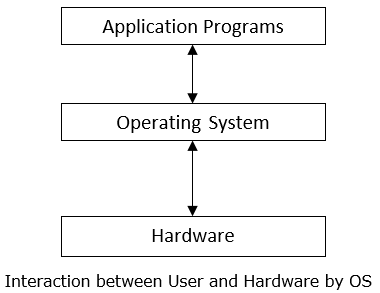Home »
Operating System
Difference Between Firmware and Operating System
Last Updated : December 30, 2025
What is Firmware?
Firmware is somewhere similar to software but it is not a software. Somehow it is a modified form of software.
Firmware is fixed data or code that is embedded in any device whether it is any computer or electronic appliances or computer peripheral. It is used to control, manage and monitor the data of various engineering product or consumer appliances.
"Firmware = Unmodified or fixed code"
Example: In a washing machine, there is pre-programmed and embedded firmware. When you set the timer then it gets the start and does all the functions that are instructed by the firmware.
Operations in firmware
Firmware contains low-level operations and it makes any device be functional. Hardware devices controlled by firmware. Somehow every piece of hardware has some kind of firmware installed in it.
All the software is written in high-level languages but it is written in low-level language that is assembly or machine language. The language which is understandable by the hardware.
Commands given by firmware
Firmware gives commands to both main memory and secondary memory. At the time of booting it gives commands to RAM to take OS codes and another command to ROM to give a copy of its OS code to RAM.
Where it resides in memory?
Firmware is in non- volatile memory such as ROM or flash memory. Changes in the firmware are rarely or not done in the past but at present, it is possible to change it after manufacture.
Example:
If a particular company or brand wants to change its basic functionalities or to add some another feature so they can change its firmware so that changes will automatically occur in the device of that brand.
The optical and hard drive are components for reading and writing data, the firmware is part that does this job on request.
BIOS is a firmware which contains all the basic functions needed to start up a computer.
Firmware is a single purpose but OS is general-purpose that allows any kind of software to run on multiple hardware.
What is an Operating System?
- Operating System(OS) is system software. The system software is designed to provide an environment to facilitate writing application programs. Example, compiler, assembler, interpreter.
- OS is a collection of programs. It works between end-user and hardware of a computer.
- It manages the resources of the computer such as processor, input and output devices, secondary storage devices.

It provides a platform on which other programs called application programs can run. Those application programs help the user to perform the task easily.
It is initially loaded into the computer by boot program and manages all application programs.
Programs make use of Operating System by requesting its services through a defined application program.
It provides templates, UI components so that end user can efficiently perform desired functions.
It is stored in mass storage devices.
Example: Windows, Linux etc.
Need of an Operating System
- If I want to access any device or execute any job so that I have to instruct that device for this we have to write a program. Just like to print any document, the print command is given to invoking the printer.
Writing programs individually for each task will complicate the interactivity between user and hardware devices.
- If I am a user and I am accessing a hardware device and at the same point of time another user wants to access that device and I am not releasing it so there is no authority between user and hardware who give me the command to relinquish control over that device.
So there are so many reasons by which we have to use OS.
Functional Area
- Resource Management: Allocation of resources such as compilers, assemblers, utility programs etc.
- Processor Management: Allocating processors to different jobs.
- Memory Management: Assignment of main memory and other storage devices.
- File Management: Keeping record of files on various storage devices.
- Security and privacy: maintaining authenticity of the system.
- Input / Output Management: maintaining interaction and allocation of various input and output devices.
- Switching from job to job guided by the special control statements.
- Generation of traces, error messages and other debugging and error detecting facility.
- Keep record of internal time clock and log of system usage.
Advertisement
Advertisement